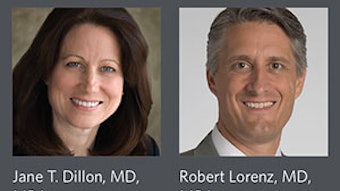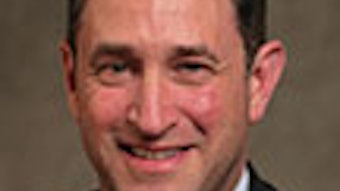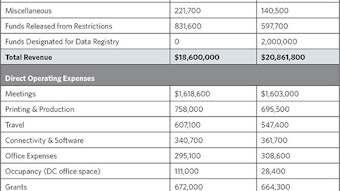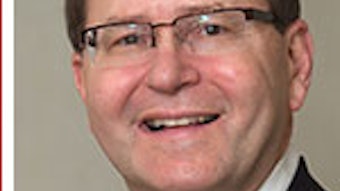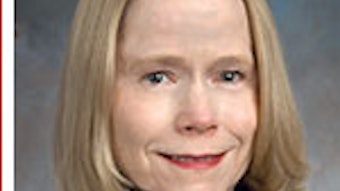21 Position Statements for review in 2015-2016
The American Academy of Otolaryngology—Head and Neck Surgery and Foundation’s (AAO-HNS/F) Position Statements are used to designate a statement, policy, or declaration of the AAO-HNS/F on a particular topic or topics. Statements are created to formalize the AAO-HNS/F position on a clinical procedure or medical service with third-party payers, for use in state and federal regulatory or advocacy efforts, or to clarify the AAO-HNS/F approval or disapproval of certain practices in medicine.
The American Academy of Otolaryngology—Head and Neck Surgery and Foundation’s (AAO-HNS/F) Position Statements are used to designate a statement, policy, or declaration of the AAO-HNS/F on a particular topic or topics. Statements are created to formalize the AAO-HNS/F position on a clinical procedure or medical service with third-party payers, for use in state and federal regulatory or advocacy efforts, or to clarify the AAO-HNS/F approval or disapproval of certain practices in medicine. Robert Lorenz, MD, MBA, Coordinator for Practice Affairs and Physician Payment Policy (3P) Workgroup Co-Chair, provides oversight on the development and maintenance of programs that support the services our physicians provide to patients, including the AAO-HNS/F Position Statements, which are reviewed every four years. There are a total of 73 active position statements with 21 last updated in December 2012 and scheduled for review this fall. As part of each committee’s charge, it is essential that the relevant AAO-HNS/F clinical committees review the Position Statements to ensure they are updated and relevant. The relevant committee chairs and staff liaisons will receive the Position Statements they are responsible for reviewing by August 2015 so that there is ample time for the review process, and the committees may opt to discuss the position statements under review at the Academy’s Annual Meeting and OTO EXPOSM.
Committees will receive a four-month time frame to review assigned statements with additional time given to those committees with more than three statements assigned. The committee will be asked to review, deliberate, and decide among three options: 1) delete the position statement because it is outdated or no longer serves a valid purpose; 2) reaffirm the position statement as written with zero changes; or 3) revise the position statement and draft a track-changes version of the original statement, clearly reflecting specific proposed changes along with rationale for the revisions. Committees are encouraged to assign two or three committee members to review the statement, submit their recommendations to the entire committee, and reach a consensus recommendation with supporting rationale that the staff liaison can submit to the 3P Workgroup for review and approval. Recommendations for new Position Statements by the committees may also be considered on an ongoing basis. (See www.entnet.org/sites/default/files/PositionStatementTemplateandDevelopmentProcess.pdf for guidance on creating a new position statement.) Pending 3P approval, the Position Statements are reviewed and approved by the AAO-HNS Boards of Directors Spring or Fall 2016 meeting for final approval.
| Position Statement | current statement available | review period begins |
| Foreign Bodies of the Upper Aerodigestive Tract | www.entnet.org/node/937 | August 7, 2015 |
| Roles of Flexible Laryngoscopy / Videostroboscopy | www.entnet.org/node/904 | August 7, 2015 |
| Micropressure Therapy | www.entnet.org/node/827 | August 7, 2015 |
| Ambulatory Procedures | www.entnet.org/node/952 | August 7, 2015 |
| Medical Role in Cerumen Removal | www.entnet.org/node/926 | August 7, 2015 |
| Hearing Aids | www.entnet.org/node/934 | August 7, 2015 |
| Voice Therapy in the Treatment of Dysphonia | www.entnet.org/node/894 | August 7, 2015 |
| CDC Immunization Recommendations for Cochlear Implant Patients | www.entnet.org/node/829 | August 7, 2015 |
| Implantable Hearing Devices | www.entnet.org/node/932 | August 7, 2015 |
| Minimal Test Battery for Cochlear Implants | www.entnet.org/node/923 | August 7, 2015 |
| Physician Drug Dispensing | www.entnet.org/node/916 | August 7, 2015 |
| Botulinum Toxin Treatment | www.entnet.org/node/951 | August 7, 2015 |
| Debridement of the Sinus Cavity after FESS | www.entnet.org/node/946 | August 7, 2015 |
| Dilation of Sinuses, any method (e.g. balloon, etc.) | www.entnet.org/node/542 | August 7, 2015 |
| Sinus Endoscopy | www.entnet.org/node/908 | August 7, 2015 |
| Nasal Surgery and OSAS | www.entnet.org/node/548 | August 7, 2015 |
| Submucosal Ablation of the Tongue Base for OSAS | www.entnet.org/node/546 | August 7, 2015 |
| Tongue Suspension | www.entnet.org/node/399 | August 7, 2015 |
| Treatment of Obstructive Sleep Apnea | www.entnet.org/node/549 | August 7, 2015 |
| Uvulopalatopharyngoplasty | www.entnet.org/node/896 | August 7, 2015 |
| Head and Neck Surgery | www.entnet.org/node/935 | August 7, 2015 |




